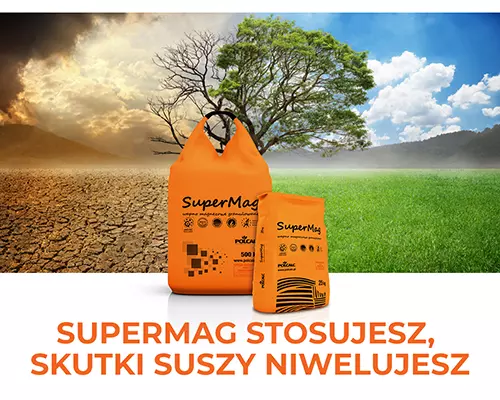
AGRICULTURAL DROUGHT - CAUSES AND EFFECTS
Agriculture is a vital sector of the Polish economy, accounting for approximately 14% of the employed population. Its particular characteristic is its high dependence on weather conditions, especially on the amount of water available in plant production. It is estimated that producing 1 ton of dry plant matter consumes an average of 350-400 tons of water. Water scarcity disrupts plant life processes, visibly resulting in inhibited growth and development, leading to a significant reduction in both quantity and quality of yields.
Water scarcity is considered one of the main stress factors. The occurrence of drought leads to a decrease in agricultural crop yields by an average of 20-40% compared to yields obtained under average long-term weather conditions (Olszewska et al. 2010; Sienkiewicz-Cholewa 2016; Motyka et al. 2019; Statistical Yearbook of the Republic of Poland 2019). Already between 1961-2006, a decrease in available water for plants by 60-90 mm was observed.
In 2018, the average atmospheric precipitation was only 564.4 mm. In a significant part of Poland, precipitation does not exceed 500 mm of water per year. These are characteristic values for the driest areas of Europe (Nowicki et al. 2014; Statistical Yearbook of the Republic of Poland 2019). Observed recent weather anomalies, such as lack of snow in winter and droughts in summer, lead to the occurrence of agricultural drought over a considerable area of Poland. The Climatic Water Balance (CWB) periodically published by the IUNG in Puławy informs us about its extent.
It unequivocally indicates that since the 3rd decade of April, soil water deficits have ranged from -89 mm to -269 mm, covering a significant part of Poland (Fig. 1; Fig. 2; Fig. 6). As revealed by data published in April 2020 by the National Water Management - Polish Waters, illustrating soil moisture at a depth of 0-7 cm, areas with moisture below 30-40% indicate possible water deficits in the root zone. This occurs over the majority of the country, and soil moisture below 30% extends even to a depth of 28 cm (Fig. 3; Fig. 4). Similarly, data from a model developed by the European Drought Observatory (EDO) indicate very low soil moisture levels compared to the long-term average (Fig. 5).
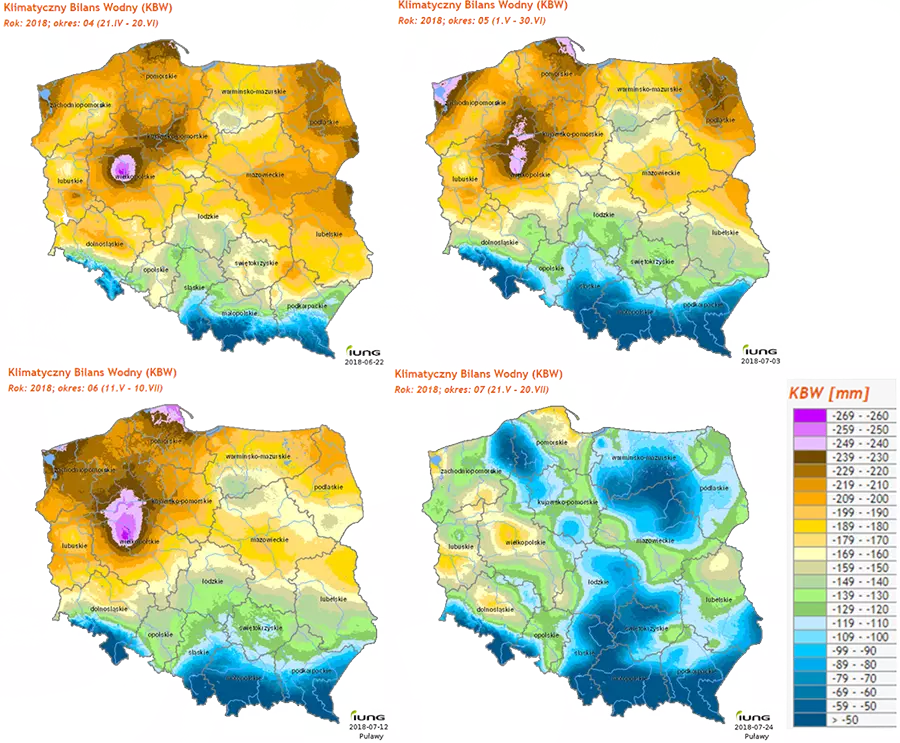
Fig. 1. Selected six-decade periods of Climatic Water Balance (CWB) for Poland in 2018 (IUNG Puławy).
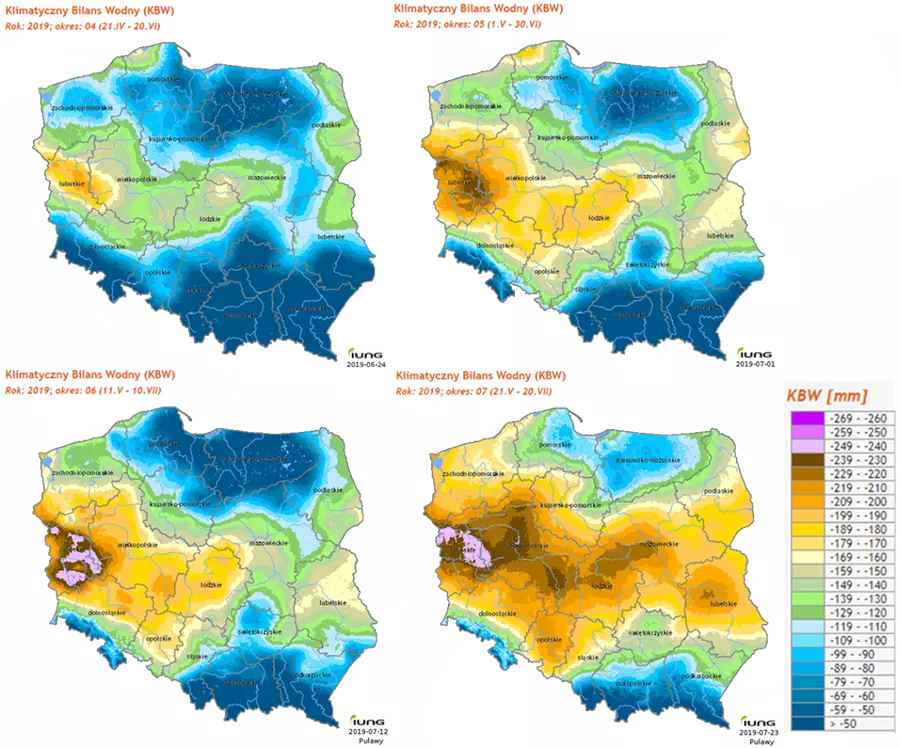
Fig. 2. Selected six-decade periods of Climatic Water Balance (CWB) for Poland in 2019 (IUNG Puławy).
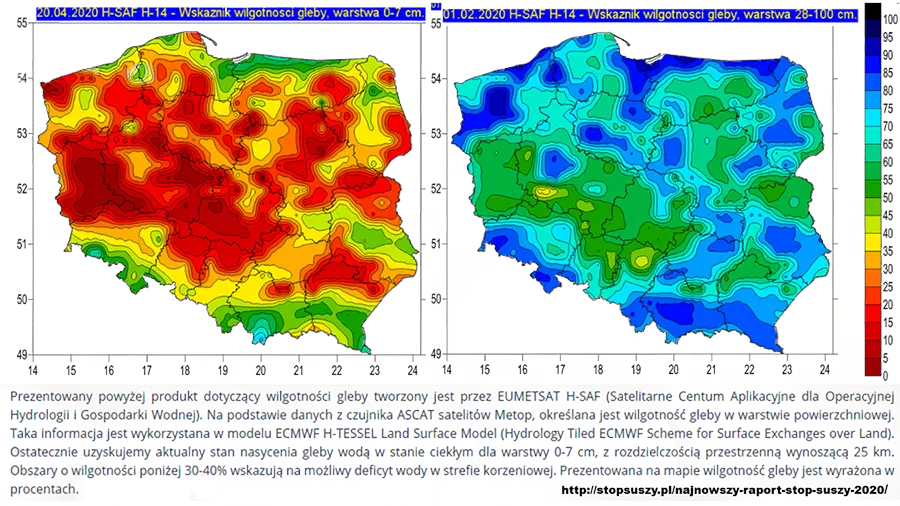
Fig. 3. Satellite soil moisture index in layers: 0-7 cm and 28-100 cm (EUMETSAT H-SAF).
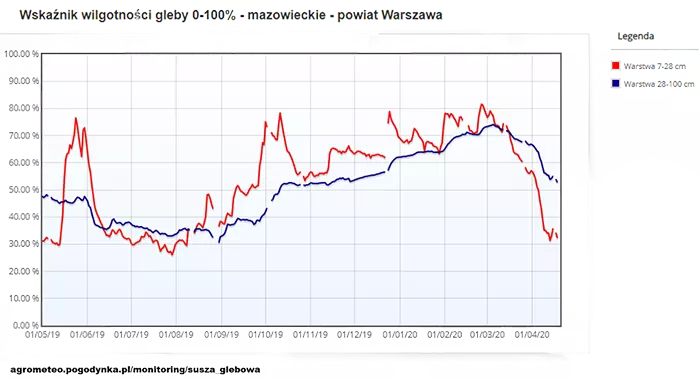
Fig. 4. Changes in soil moisture index for the Warsaw district in the period from 01.05.2019 to 01.04.2020.
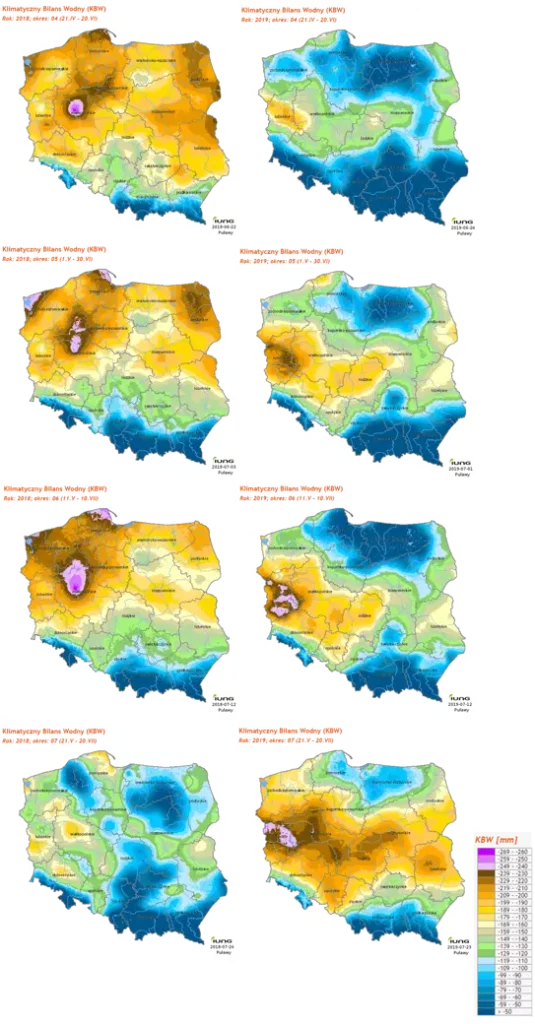
Fig. 5. Selected six-decade periods of Climatic Water Balance (CWB) for Poland in the years 2018-2019 (IUNG Puławy).
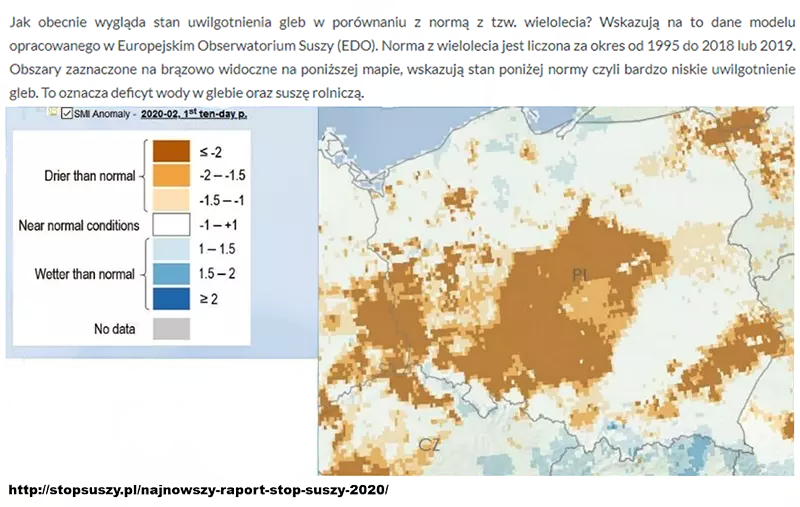
Fig. 6. Comparison of soil moisture status marked on 01.02.2020 with the norm for the so-called multi-year period.
HOW DO LIME FERTILIZERS WORK?
The soil's ability to retain water (known as water holding capacity) depends on its particle size distribution and organic matter content (especially humus). Humus binds 3-5 times more water relative to its mass. However, this requires proper, i.e., granular, soil structure. It increases the soil's water retention capacity, thus limiting surface water runoff and erosion intensification (Motyka et al. 2019). It is worth mentioning that calcium ions participate in creating a durable granular structure, binding soil colloids into "crumbs." That is why it is particularly important to strive for an increased humus content in the soil.
One of the main agrotechnical factors determining humus content is soil liming (Motyka et al. 2019). In this procedure, fertilizers with high reactivity should be used. A good choice would be SuperMag - granulated magnesium carbonate lime produced by Polcalc Lime Fertilizers Ltd. This fertilizer is produced from crushed limestone magnesia with particle sizes ranging from 0.01 to 0.09 mm, with over 50% of particles having a diameter smaller than 0.02 mm. Only such pulverization of limestone-magnesia ensures 100% fertilizer reactivity, as the more powdery fractions a lime-magnesium fertilizer contains, the greater its reaction surface with soil solutions (Gołębiewski 2015).
The magnesium-limestone powder is then subjected to an innovative granulation process without the addition of any binders. The granules obtained in this process allow for uniform spreading of SuperMag fertilizer with a size of 2-8 mm. This production technology ensures maximum chemical activity and rapid dissolution of granules even with low soil and atmospheric humidity.
AGRICULTURAL DROUGHT IN POLAND - LIME FERTILIZER AS A COMPREHENSIVE SOLUTION
Thanks to its high calcium and easily assimilable magnesium content, SuperMag has a greater neutralizing power (overall alkalinity) than typical carbonate limes because magnesium oxide has a 40% greater neutralizing power than calcium oxide (Gołębiewski 2015). Thus, this fertilizer quickly raises soil pH, significantly enhancing the efficient use of macronutrients contained in the soil by plants.
Especially crucial during periods of water scarcity is the increase in potassium uptake efficiency by plants observed after applying SuperMag fertilizer. Potassium regulates plant water management, among other things, by opening and closing leaf stomata, allowing plants to better withstand drought periods. This element also regulates proper plant metabolism by activating over 60 enzymes, participating in the synthesis of proteins, vitamins, and cellulose. Adequate potassium supply reduces plant susceptibility to diseases and pests, improves winter hardiness of winter crops, and promotes root system development (Tyburski 2007).
PHOSPHORUS AND MAGNESIUM - ESSENTIAL FOR PLANT GROWTH
Another essential macronutrient, the efficiency of which increases after applying granulated magnesium lime SuperMag, is phosphorus. This element plays a crucial role in the transformation processes of organic compounds in plants, such as respiration, amino acid production, acidic amino amides, and proteins. Additionally, it stimulates many enzymatic processes in the plant, such as diastase activity. It is essential to emphasize the significant impact of phosphorus on the growth and development of plants in the first two weeks after emergence. Plants well-supplied with this element develop their root system faster, which positively affects water and mineral salt uptake.
High-reactive magnesium contained in SuperMag also significantly influences root growth. An extensive root system allows plants to absorb water from greater depths of the soil and survive agricultural drought periods. It is worth mentioning that the beneficial high-reactive magnesium contained in SuperMag granules, at 42% MgCO3 , also serves several other important physiological functions in plants. This element regulates the intensity of photosynthesis. Not only because it is the main structural component of chlorophyll but also because it activates several of its stages. Magnesium also determines the energy metabolism in plants, carbohydrate, fat, and protein synthesis, as well as assimilate transport, and also reduces nitrate content. The stimulating effect of magnesium on phosphorus uptake and transport by plants has been demonstrated (Tyburski 2007; Kopcewicz and Lewak 2008).
BENEFITS OF MAGNESIUM LIME FERTILIZER
Granulated magnesium carbonate lime SuperMag does not limit itself only to raising soil pH. It has been shown that this fertilizer has a beneficial effect on increasing humus content in the soil, and the calcium it contains contributes to the formation and consolidation of a granular structure in the soil. This structure is particularly desirable in conditions of annual water deficits in the soil because a granular structure increases the soil's retention capacities and limits surface water runoff (Motyka et al. 2019). SuperMag produced by Polcalc Lime Fertilizers Ltd. increases the efficiency of potassium, phosphorus, and nitrogen uptake by plants and is a source of high-reactive magnesium essential for plants. This fertilizer also contains essential plant micronutrients such as iron, manganese, and boron.
SuperMag is a granulated fertilizer with the highest content of high-reactive calcium and magnesium (55% CaCO3; 42% MgCO3) for plants. These elements, due to the raw material processing method, are characterized by easy assimilation by plants. Agricultural drought in Poland has become one of the most significant issues in food production. The use of modern and safe fertilizers is a solution that will help tackle this situation.







